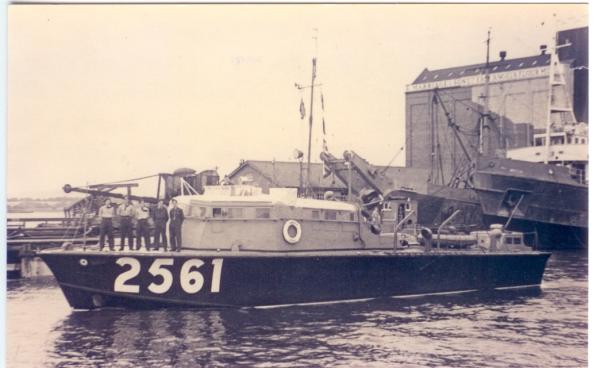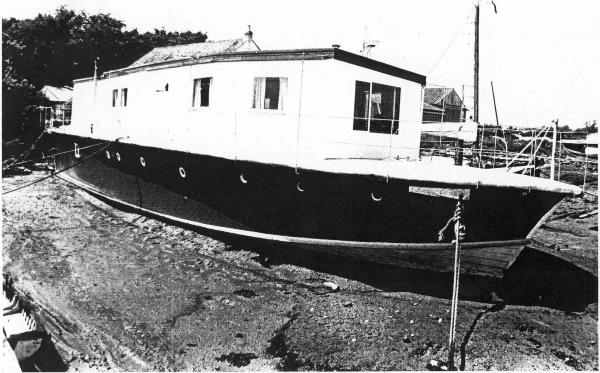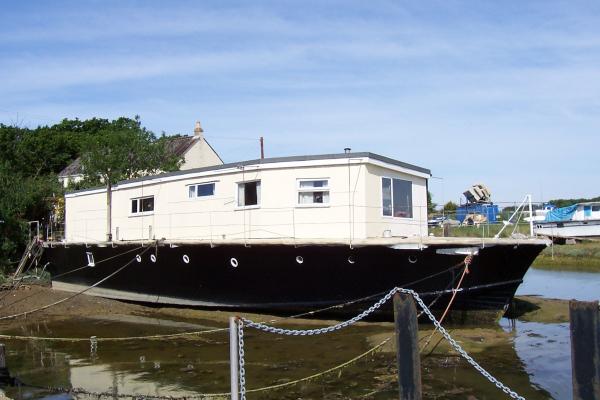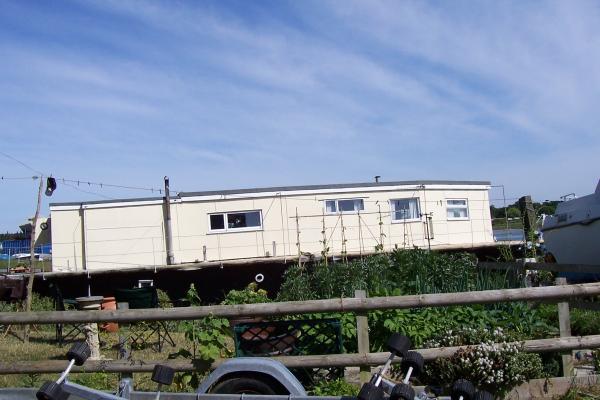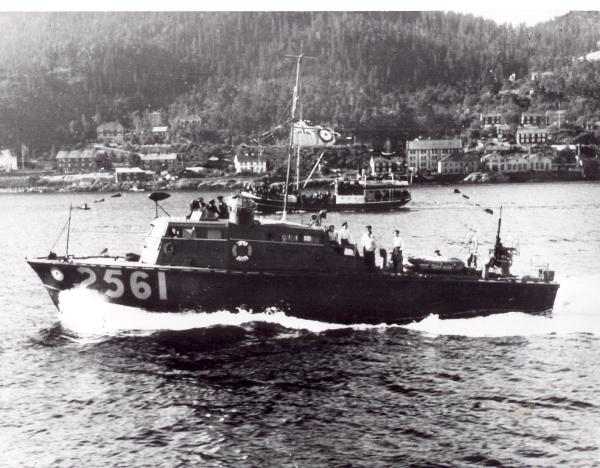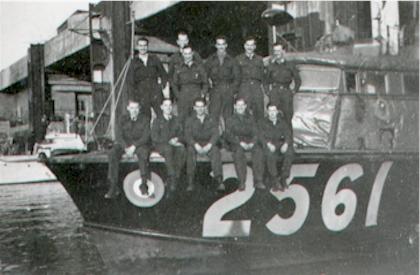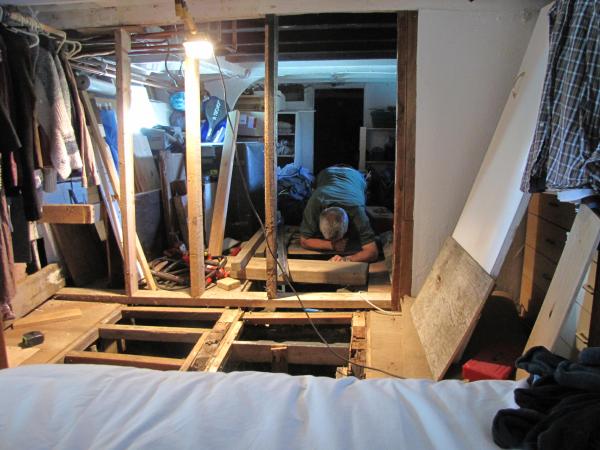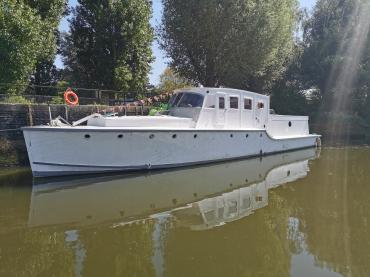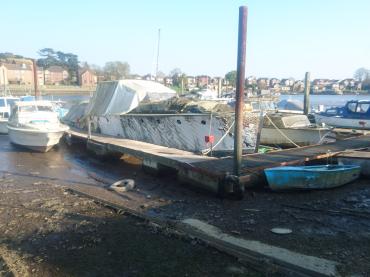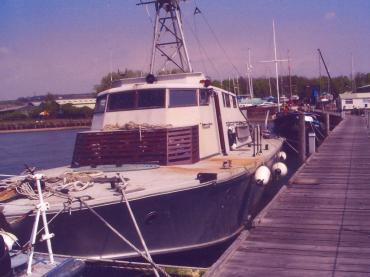

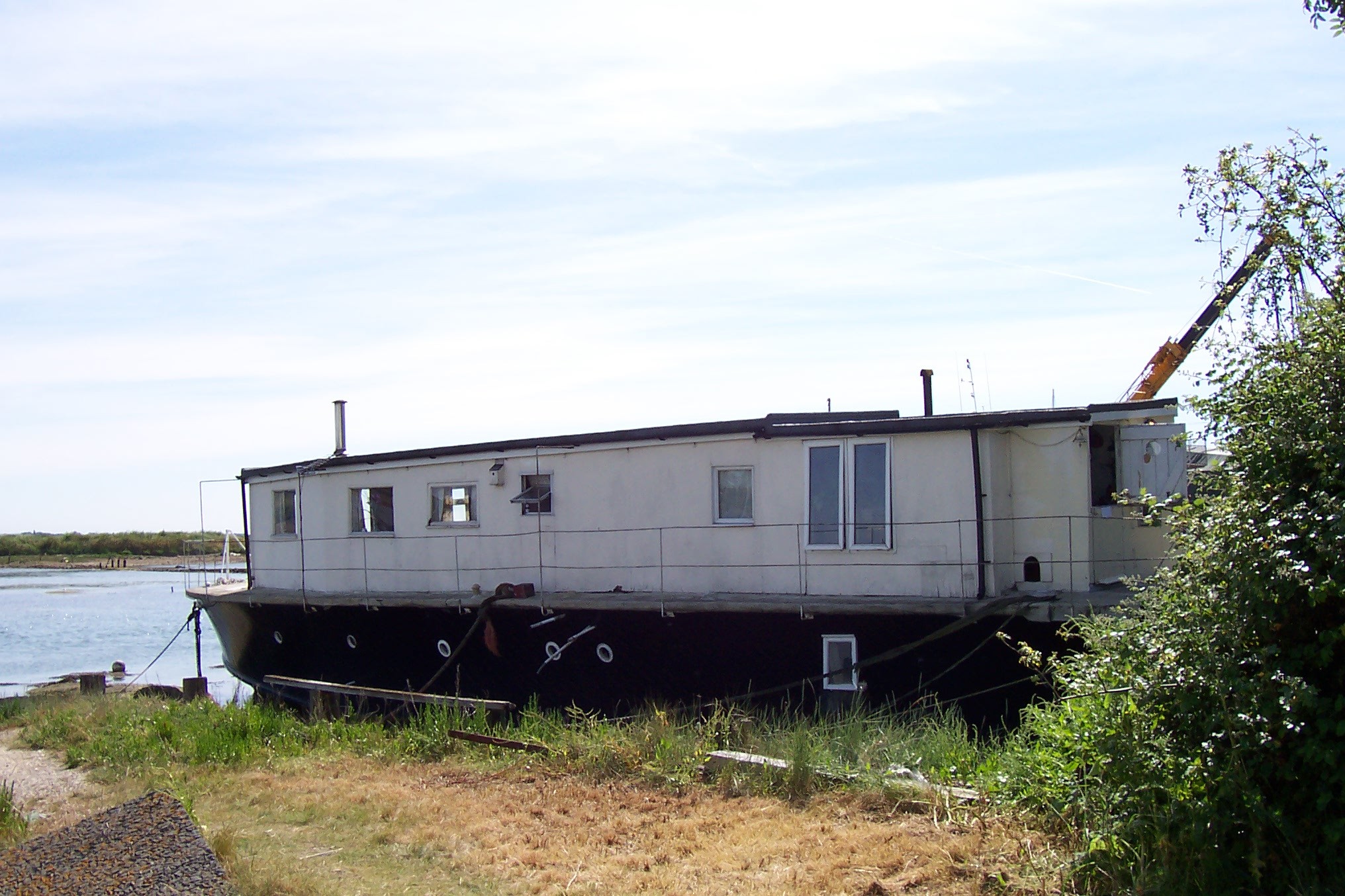
Previous names
- HSL 2561
Details
Construction
Dimensions
History
2561 BLUE LEADER is an ex-RAF air sea rescue launch, designed by George Selman and built by the British Powerboat Company Ltd. in 1943 at Hythe. Her hull is wooden with a hard chine and is double diagonal built. Her pennant number was HSL 2561. She was originally powered by three Napier Sealion engines, linked to three propellers. She went into service from February 1943 and was involved in the D-Day Landings, receiving a citation.
In June 1945, she was escort boat for King Haakon through Trondheim fiord to Trondheim on his return to Norway.
She was commended by Flag Officer British Assault Areas for her performance 27th August (copy of citation with me) when three Royal Navy minesweepers were sunk off Le Harve by friendly fire, with heavy loss of life. She picked up over 100 wounded sailors transferring them to hospital ship in Arromanches apparently most survived.
Her hull is in its original condition. The superstructure was removed in 1977 when the boat was also stripped of her Napier Sealion engines. She is based at Hayling Island and is used as a houseboat.
Significance
Was part of the D-day landings - Juno Beach and Arromanches - covering all the fighter sweeps and mass bombing of Caen and Le Harve.
Sept 44 to May 45 - from Arromanches to Ostend, 2561 was the first vessel in Ostend, (the Germans were still fighting in the fish market)
June 1945 2561 was escort boat for King Haakon through Trondheim fiord to Trondheim on his return to Norway.
2561 was commended by Flag Officer British Assault Areas for her performance 27th August (copy of citation with me) when three Royal Navy minesweepers were sunk off Le Harve by friendly fire, with heavy loss of life. 2561 picked up over 100 wounded sailors transferring them to hospital ship in Arromanches apparently most survived.
May to Dec 1945 Posted to Norway a few days after the war ended 2561 went to Trondheim supporting the Norwegian civil authorities in regaining some sort of normality.
2561 was used by the War Crimes investigators, taking them round the Islands taking charge of suspects and in some places taking a belated surrender. It is thought by the crew member (B.W. Kain fitter 2561 at the time) that between May 1944 and Dec 1945, 2561 saved 278 people from the sea.
Key dates
-
1943
Built by British Powerboat Co.Limited, Hythe
-
1944
Involved in D Day landings also saw service in Norway acting as escort boat for the Prince of Norway
- 1953 Used in making of film "The Sea shall not have them"
- 1977 Superstructure removed and stripped of engines Converted to a houseboat
-
2007
Awarded a sustainability grant of £1500 given by NHS-UK
-
2007
Complete restoration commenced
Grants
-
2007
BLUE LEADER was awarded a sustainability grant of £1500 towards the costs of re-planking the bow area of the hull at the waterline from the Strategic Development Fund of National Historic Ships
Sources
World Ship Society British Armed Forces Small Craft Historical Society, Survivors Register (1998)
Own this vessel?
If you are the owner of this vessel and would like to provide more details or updated information, please contact info@nationalhistoricships.org.uk

